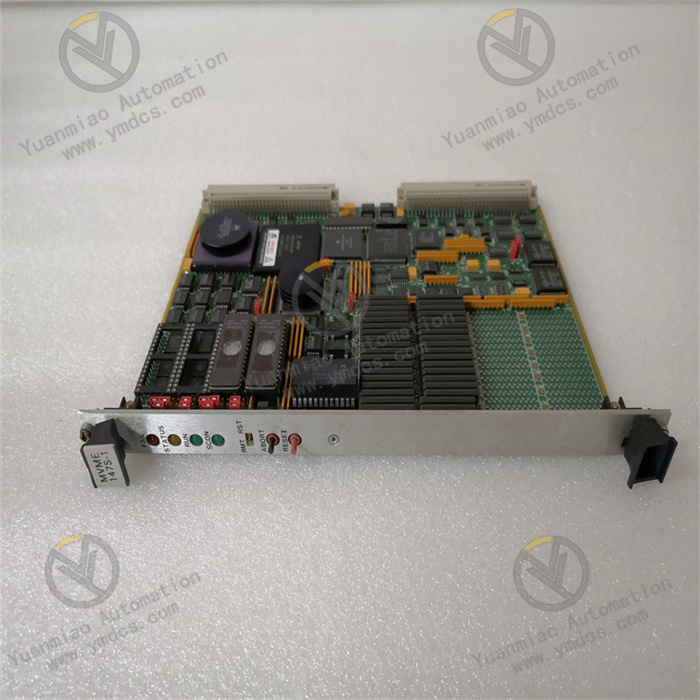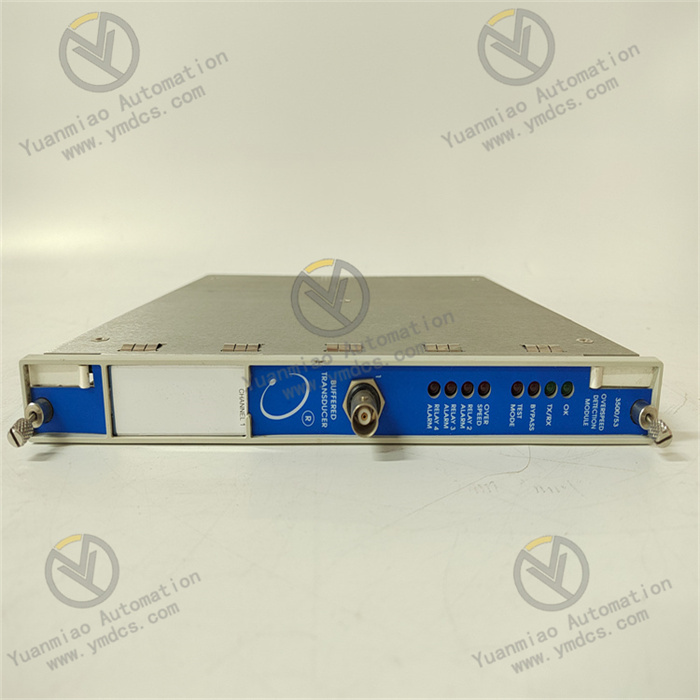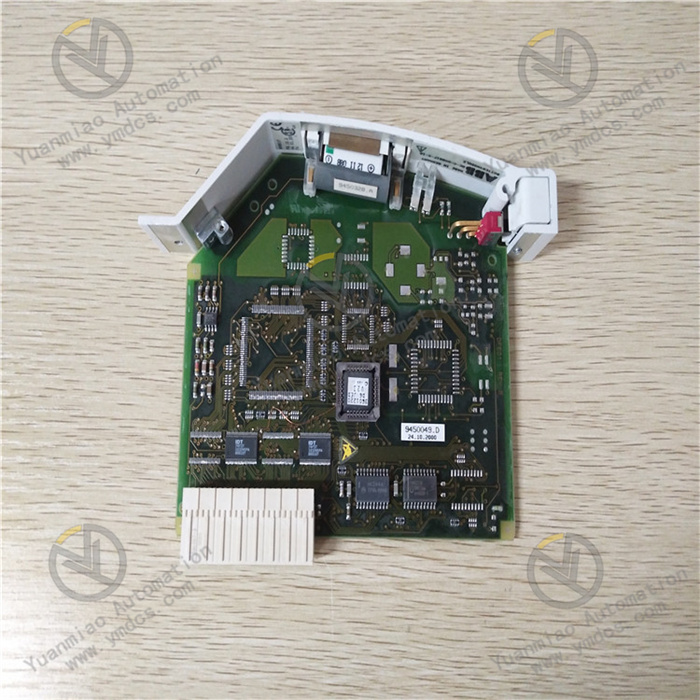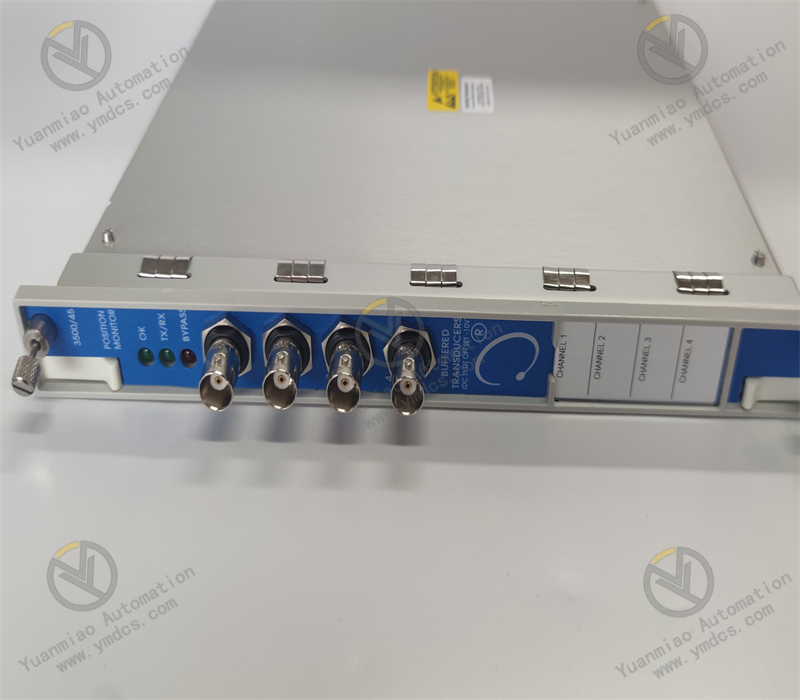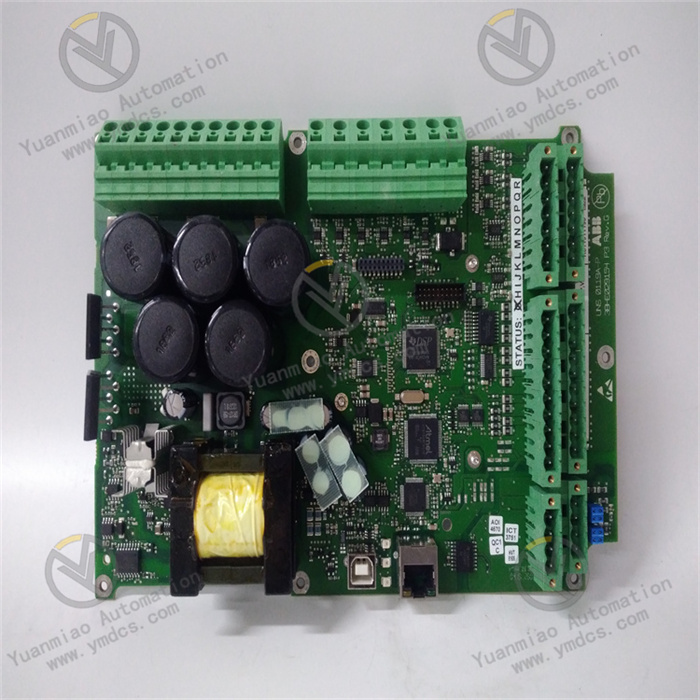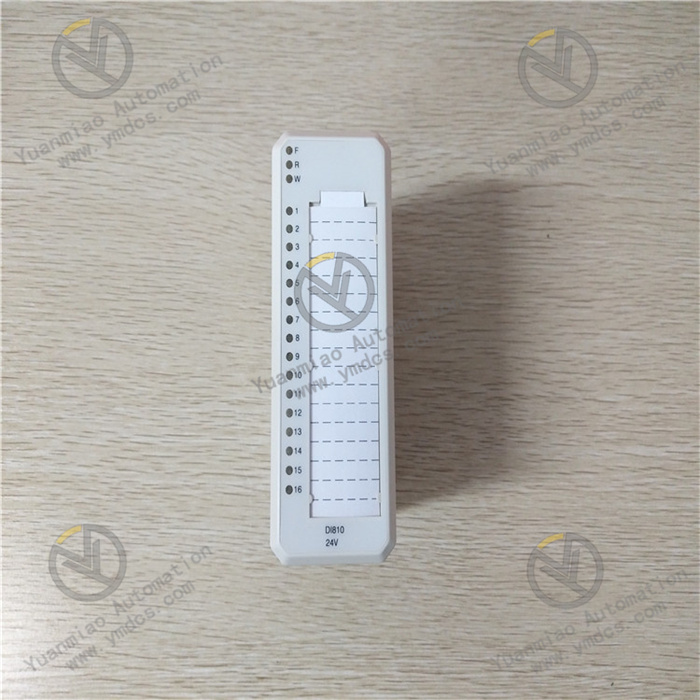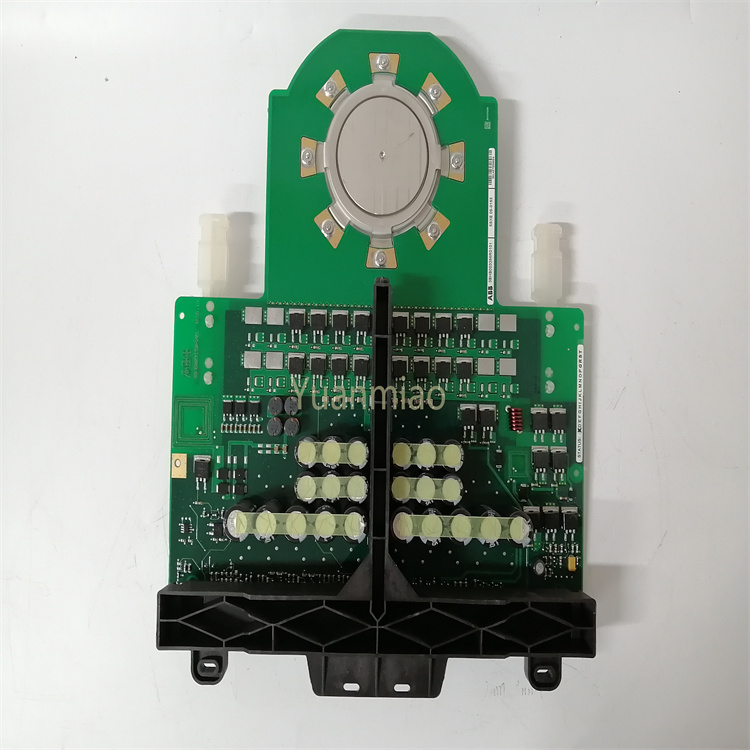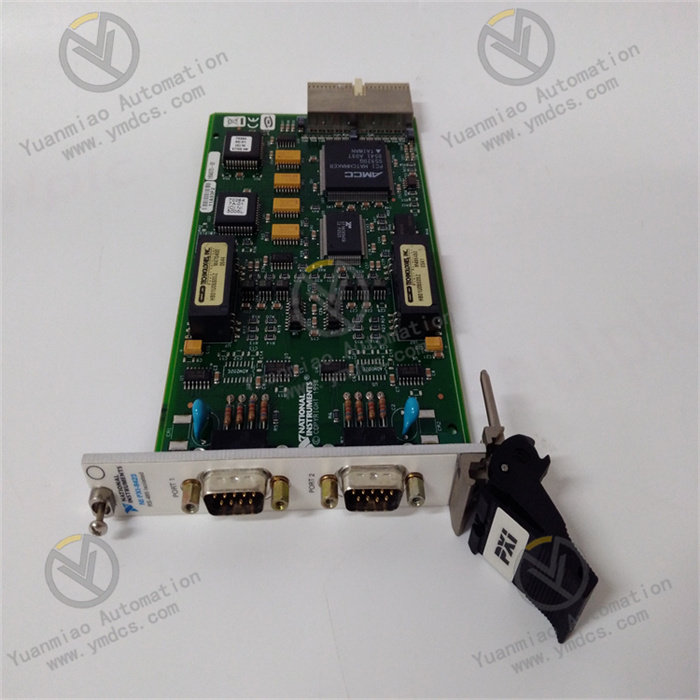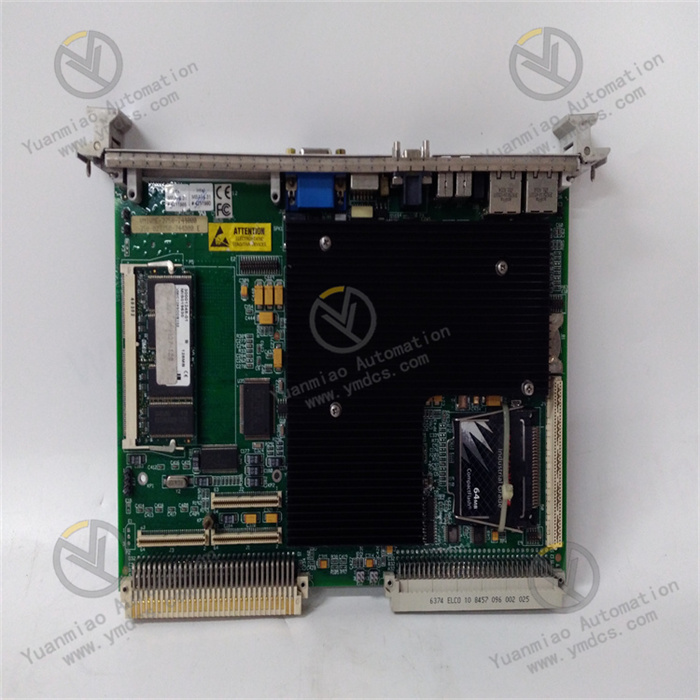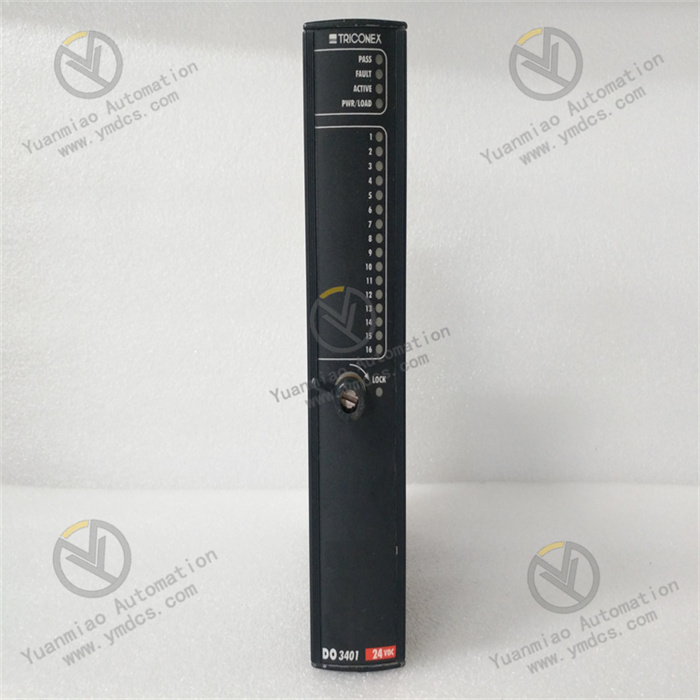Description
Features of Motorola MVME147S-1: High-performance Processor: Equipped with the Motorola MC68030 microprocessor, which has a relatively high operating frequency (commonly 25MHz, etc.). The 32-bit data and address bus design endows it with powerful data processing and computing capabilities. Paired with the MC68882 floating-point coprocessor, it can quickly handle complex mathematical operations and data processing tasks, and is suitable for application scenarios with high requirements for computing performance, such as the calculation of real-time control algorithms in industrial automation and data processing in high-energy physics experiments. Rich Memory Configuration: It is equipped with shared DRAM with parity checking (no parity checking on MVME147SRF). The standard capacity is 4MB and it can be expanded to 32MB, meeting the memory requirements for running complex programs and processing a large amount of data. At the same time, the 2K×8 CMOS RAM with a backup battery can ensure that key data will not be lost in case of power failure, such as system configuration parameters and operation status data, etc., improving the reliability of the system and data security. Diverse Storage Interfaces: There are four 16-bit wide ROM/PROM/EPROM/EEPROM sockets, which facilitate users to flexibly install different types of storage chips according to their needs. These sockets can be used to store startup programs, firmware, important data, etc., providing multiple options and expansion space for system program loading and data storage.
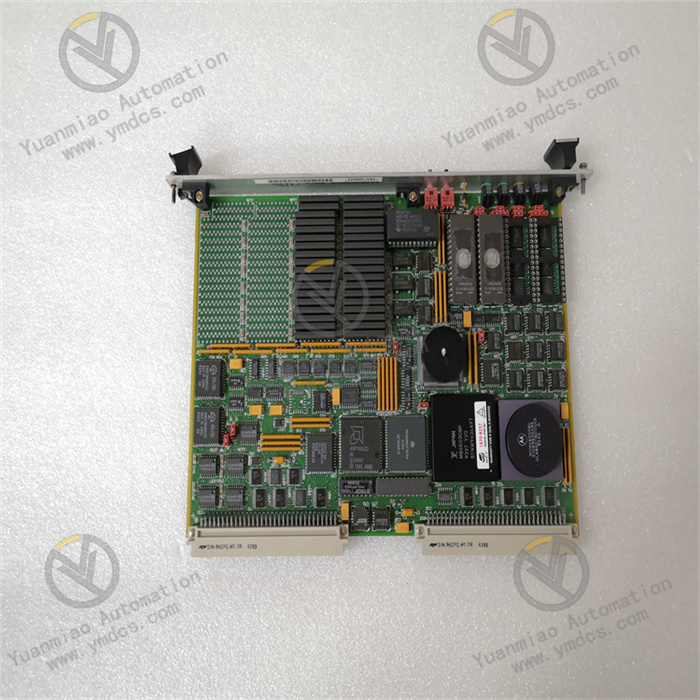
Extensive Communication Interfaces: It has four RS-232C buffered serial ports, which can perform serial communication with a variety of devices, such as industrial instruments, sensors, printers, etc., to achieve data transmission and device control; The Centronics printer port is convenient for directly connecting a printer to output data; The SCSI bus interface with a DMA channel can achieve high-speed data transmission with SCSI devices, which is suitable for connecting large-capacity data storage devices; The VME bus master interface is compatible with A32/D32 and A24/D16 modes, and can act as a master device in the VME bus system to work in coordination with other modules; The Ethernet transceiver interface (except for MVME147SRF) supports network communication, facilitating remote data transmission and system integration, and meeting the requirements for network connection in fields such as industrial automation and communication. Reliable Timing and Monitoring Functions: The real-time clock/calendar with a backup battery can provide accurate time information, which is very important for applications such as recording event times and data logs; The two 16-bit tick timers can generate periodic interrupts, providing convenience for the timing control of the system, such as controlling the periodic operation of devices and the timing triggering of data collection, etc.; The watchdog timer can automatically reset the system when an abnormality occurs, preventing the system from crashing due to software failures or other abnormal situations, enhancing the stability and reliability of the system. Convenient Status Indication and Operation: Status indicator lights such as SCON, DUAL, FAIL, and STATUS on the module can intuitively display the working status of the module, allowing users to quickly understand the operation of the system and promptly detect and diagnose faults; The reset and abort switches facilitate users to operate the module. They can perform reset operations or abort ongoing tasks during system debugging or when an abnormality occurs, improving the maintainability of the system and the convenience of operation. Good Compatibility and Expandability: As a part of the VME bus system, MVME147S-1 has good compatibility with other VME bus modules and can be conveniently integrated into the VME bus system to expand system functions according to different application requirements. At the same time, its multiple interfaces also enable it to flexibly connect and communicate with external devices, adapting to different application scenarios and system architectures. Adaptability to Industrial Environment: Under the condition of forced air cooling, it can work normally within the temperature range of 0°C to 55°C, and its environmental adaptability to a relative humidity range of 5% to 95% (non-condensing) enables it to operate stably in relatively harsh industrial environments, meeting the requirements for device environmental adaptability in fields such as industrial automation and defense.
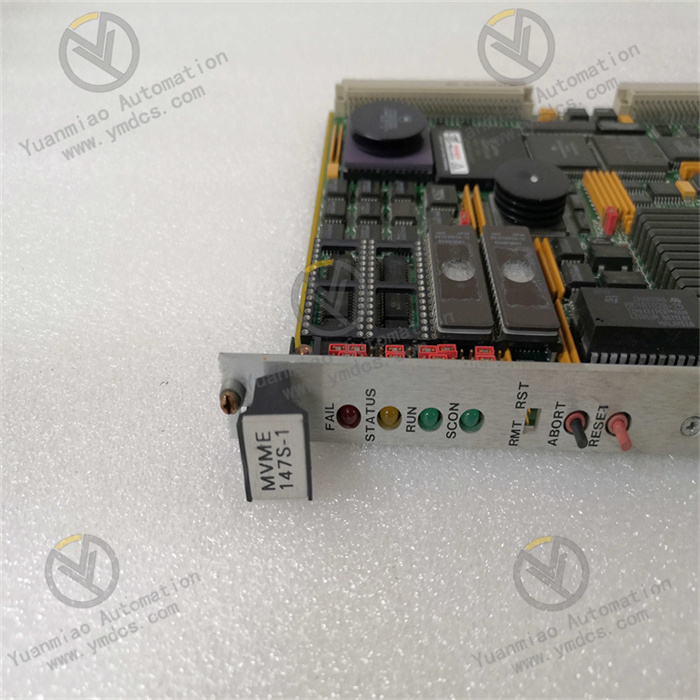
Technical Parameters: Processor: It adopts the Motorola MC68030 microprocessor, and the general operating frequency is 25MHz (there are also other optional frequency configurations). This processor has a 32-bit data and address bus, providing relatively high processing performance and data transmission capabilities. Paired with the Motorola MC68882 floating-point coprocessor, it can accelerate floating-point operations and improve the processing speed of complex mathematical operations, suitable for application scenarios that require a large amount of data processing and calculation. Memory: It has shared DRAM with parity checking (no parity checking on MVME147SRF). The standard memory capacity is usually 4MB and it can be expanded to 32MB, which is used to store running programs and data. It is equipped with a 2K×8 CMOS RAM with a backup battery, which is used to store some data that needs to be retained during power failure, such as system configuration information and important operation parameters, etc. Storage Interface: It has four ROM/PROM/EPROM/EEPROM sockets with a width of 16 bits, which can be used to install different types of storage chips, facilitating users to load startup programs, firmware, or store some fixed data. Communication Interface: It has four RS-232C buffered serial ports, supporting the standard RS-232C communication protocol, and can be used for serial communication with other devices, such as connecting printers, modems, industrial devices, etc. It provides a Centronics printer port, which is convenient for connecting a printer to print and output data. It has a Small Computer System Interface (SCSI) bus interface with a DMA channel, supporting high-speed data transmission with SCSI devices (such as hard disks, tape drives, etc.), and the data transmission rate is relatively high. It has a VME bus master interface, which is compatible with A32/D32 and A24/D16 modes, and can act as a master device in the VME bus system to communicate and exchange data with other VME bus modules. It has an Ethernet transceiver interface (except for MVME147SRF), supporting the Ethernet communication protocol, which can achieve network connection, remote data transmission and sharing, facilitating system integration and remote monitoring.
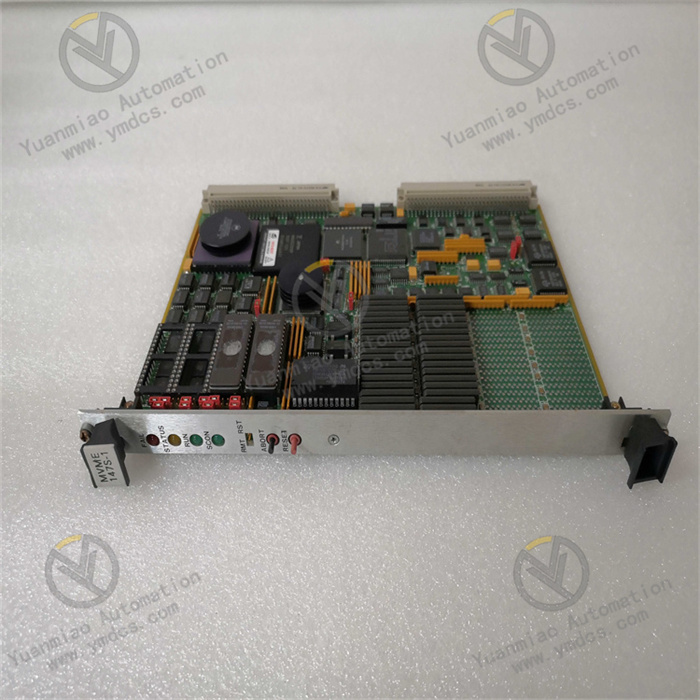
Timing and Monitoring: It is equipped with a real-time clock/calendar with a backup battery, which can provide accurate time information for recording event timestamps, etc. It has two 16-bit tick timers, which can be used to generate periodic interrupts, providing a timing function for the system to meet the time control requirements of different applications. It has a watchdog timer, which can automatically reset the system when an abnormality occurs, improving the reliability and stability of the system. Other Features: It has VME bus interruptor, VME bus system controller functions, and VME bus requester, which can effectively manage the communication and control of the VME bus and coordinate the work among multiple modules. Status indicator lights such as SCON, DUAL, FAIL, and STATUS are set on the module, which can intuitively display the working status of the module, such as system connection status, dual-machine status, fault status, etc., facilitating users to diagnose faults and monitor the system. It is equipped with reset and abort switches, and users can use these switches to perform reset operations on the module or abort ongoing operations, facilitating system debugging and maintenance. Power Requirements: Generally, it requires a power input of +5V DC and ±12V DC. The specific power current requirements will vary according to different configurations and working states. Working Environment: The working temperature range is usually 0°C to 55°C (under the condition of forced air cooling), and it can adapt to certain temperature changes in the industrial environment. The relative humidity range is generally 5% to 95% (non-condensing), and it can work normally in such a humidity environment.
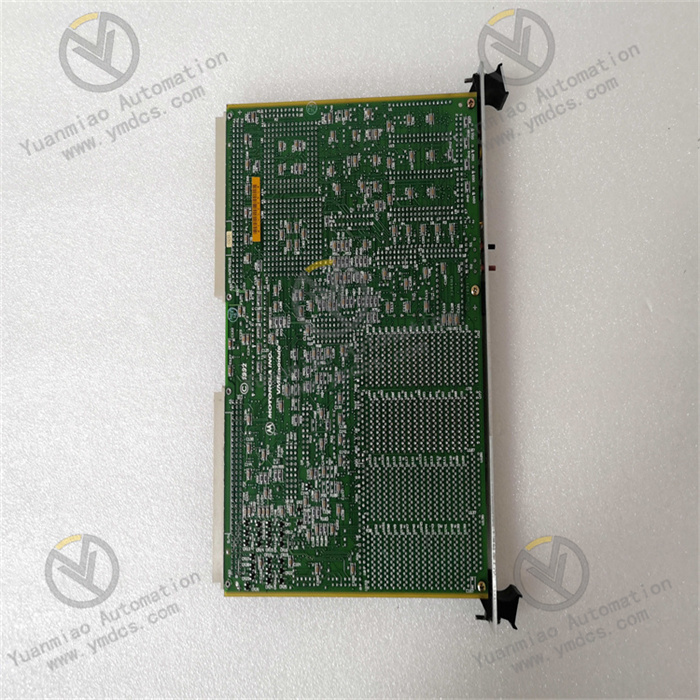
Application Areas: Industrial Automation: On industrial production lines, MVME147S-1 can serve as the core control unit. For example, in an automobile manufacturing production line, it can process data from various sensors (such as position sensors, speed sensors, pressure sensors, etc.) in real time, precisely control the movements of robotic arms, the running speed of conveyor belts, and the startup, shutdown, and parameter adjustment of various processing equipment, realizing the automation and precise control of the production process and improving production efficiency and product quality. At the same time, its rich interfaces (such as serial ports, SCSI bus interfaces, etc.) can be conveniently used to communicate and integrate with other devices (such as PLCs, frequency converters, intelligent instruments, etc.) to build complex industrial automation control systems. Testing and Measurement: In testing equipment, MVME147S-1 can quickly process and analyze various test data. For example, in the performance testing of electronic devices, it can receive signal data from testing instruments (such as oscilloscopes, multimeters, spectrum analyzers, etc.), perform real-time calculation and analysis, and determine whether the device meets the performance indicators. In addition, through the Ethernet interface, the test data can also be transmitted to a remote server or monitoring center, facilitating technicians to conduct remote monitoring and data analysis. Its high-precision timing and interrupt functions also help to achieve precise test timing control. Communication Field: In communication equipment, MVME147S-1 can serve as a communication processing module. For example, in base station equipment, it can process and forward various communication signals and realize the conversion between different communication protocols (such as the conversion from wireless signals to wired network signals). At the same time, using its powerful computing capabilities, it can encrypt and decrypt communication data to ensure the security of communication. In addition, multiple MVME147S-1 modules can also be networked through the network interface to build a distributed communication system, improving the reliability and processing capabilities of the communication system. Aerospace: In the aerospace field, MVME147S-1 can be used in the control systems and data processing systems of aircraft. For example, in the flight control system of an aircraft, it can receive data from various sensors (such as gyroscopes, accelerometers, barometers, etc.) in real time, precisely calculate and control parameters such as the attitude, speed, and altitude of the aircraft to ensure the stable flight of the aircraft. In the satellite system, it can process the communication data between the satellite and the ground station, store, forward, and analyze the data, and at the same time, it can also control and monitor various devices of the satellite to ensure the normal operation of the satellite. Its high reliability and anti-interference ability also enable it to adapt to the complex environmental requirements of the aerospace field. Defense Field: In military equipment, MVME147S-1 can be applied to weapon control systems, radar systems, command and control systems, etc. For example, in a missile control system, it can quickly process target information from various sensors, precisely calculate the flight trajectory and control parameters of the missile, and guide the missile to accurately hit the target. In a radar system, it can process and analyze radar echo signals in real time, identify the position, speed, and type of the target, etc. Its sturdy design and reliable performance enable it to operate stably in harsh military environments, meeting the requirements for high reliability and high performance of equipment in the defense field. High-Energy Physics: In high-energy physics experiments, MVME147S-1 can be used in data acquisition and processing systems. For example, in a particle accelerator experiment, it can collect a large amount of data from various detectors (such as particle detectors, electromagnetic detectors, etc.) in real time and quickly process and analyze this data to help scientists study the properties and interactions of particles. Its powerful computing capabilities and high-speed data transmission interfaces (such as SCSI bus interfaces, Ethernet interfaces, etc.) can meet the requirements for data processing and transmission in high-energy physics experiments.




